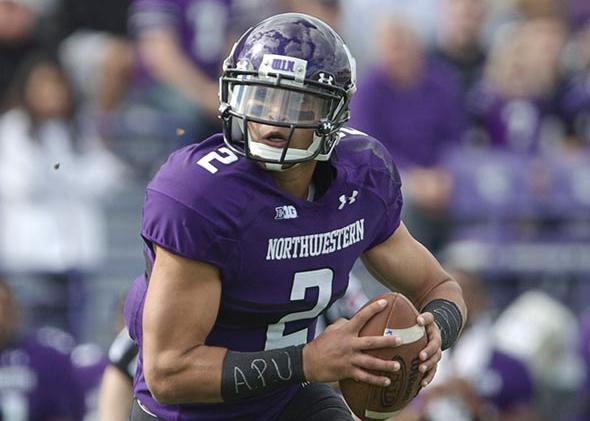A regional office of the National Labor Relations Board has ruled that Northwestern University football players are employees with the right to unionize. It’s an unexpected and potentially momentous decision that could change college sports. If it holds up on appeal, this may well be the first step in a chain of events that brings down the charade of amateurism in NCAA athletics.
Of course, that’s a big “if.” Who knows how this case could shake out if it one day ends up in front of the Supreme Court.
Still, I’d like to draw attention to the refreshingly obvious point that Peter Ohr, director of the NLRB’s Chicago office, makes on page 18 of his opinion. No matter what the NCAA wants you to think, Northwestern’s scholarship football players, he writes, “are not primarily students.” It’s that simple.
Why not? Because math:
- Players spend 50 to 60 hours a week on football during a training camp before school starts.
- They also dedicate 40 to 50 hours per week on football during the four-month season. “Not only is this more hours than many undisputed full-time employees work at their jobs, it is also many more hours than the players spend on their studies,” Ohr writes. They spend 20 hours per week in class and more doing homework, sure, but they also work on football outside of official practice time. Ohr’s equation also doesn’t seem to take into account the off season. But, he writes, it “cannot be said” that they “spend only a limited number of hours performing their athletic duties.”
This is not the crux of the case, but it is a direct retort to the mostly fictive concept of the big-time scholar-athlete. Ohr is saying that Northwestern’s players are athletes first, students second. Throughout the decision, he recounts the ways in which team members are expected to prioritize athletics over school—for instance, by avoiding classes that might conflict with practices, even if the courses are necessary for their major. The fact that the university tries to support them with tutors and study hall requirements only underscores “the extraordinary time demands placed on the players by their athletic duties,” he writes.
And this is at Northwestern, an institution known for taking greater care than most schools to balance academics and sports. (Full disclosure: I’m an alum. If the administration had slightly looser standards, our Saturdays at Ryan Field probably would have been a great deal more fun.) As Ohr notes, the players have a cumulative grade point average of 3.024 and a 97 percent graduation rate, the latter of which is the highest of any top-tier football squad in the country. If Northwestern can’t make the case that their players are “primarily students,” who can?
This distinction matters legally, because Northwestern had argued that the NLRB should apply the test it used when it ruled in 2004 that graduate teaching assistants at Brown could not unionize. Part of the board’s reasoning, at the time, was that while TAs indeed do lots of work as instructors, they are primarily at school to learn, and teaching is one of their degree requirements. Ohr found that the Brown test wasn’t applicable, because nobody is required to play cornerback to earn a bachelor’s degree. But even if the test did apply, it still wouldn’t stop football players from unionizing, because of the sheer amount of time they spend on the field and at the gym rather than in their lecture halls.
The broader point of Ohr’s ruling is that Northwestern’s scholarship football players really do work for pay. They are recruited largely for their football abilities; they spend an inordinate amount of time on their sport; they’re rewarded with valuable scholarships, which can be canceled; they’re subject to special rules other students aren’t; and their labor is clearly valuable to the school, which brings in millions of dollars in football-related profits. On the other hand, he finds that nonscholarship, walk-on players, who have more flexibility when it comes to balancing athletics and sports and basically play for the love of the game, can’t unionize.
Legal reasoning aside, it’s just nice to see the obvious acknowledged. Football players are not “primarily students.” Their skills wouldn’t be so valuable if they were.
